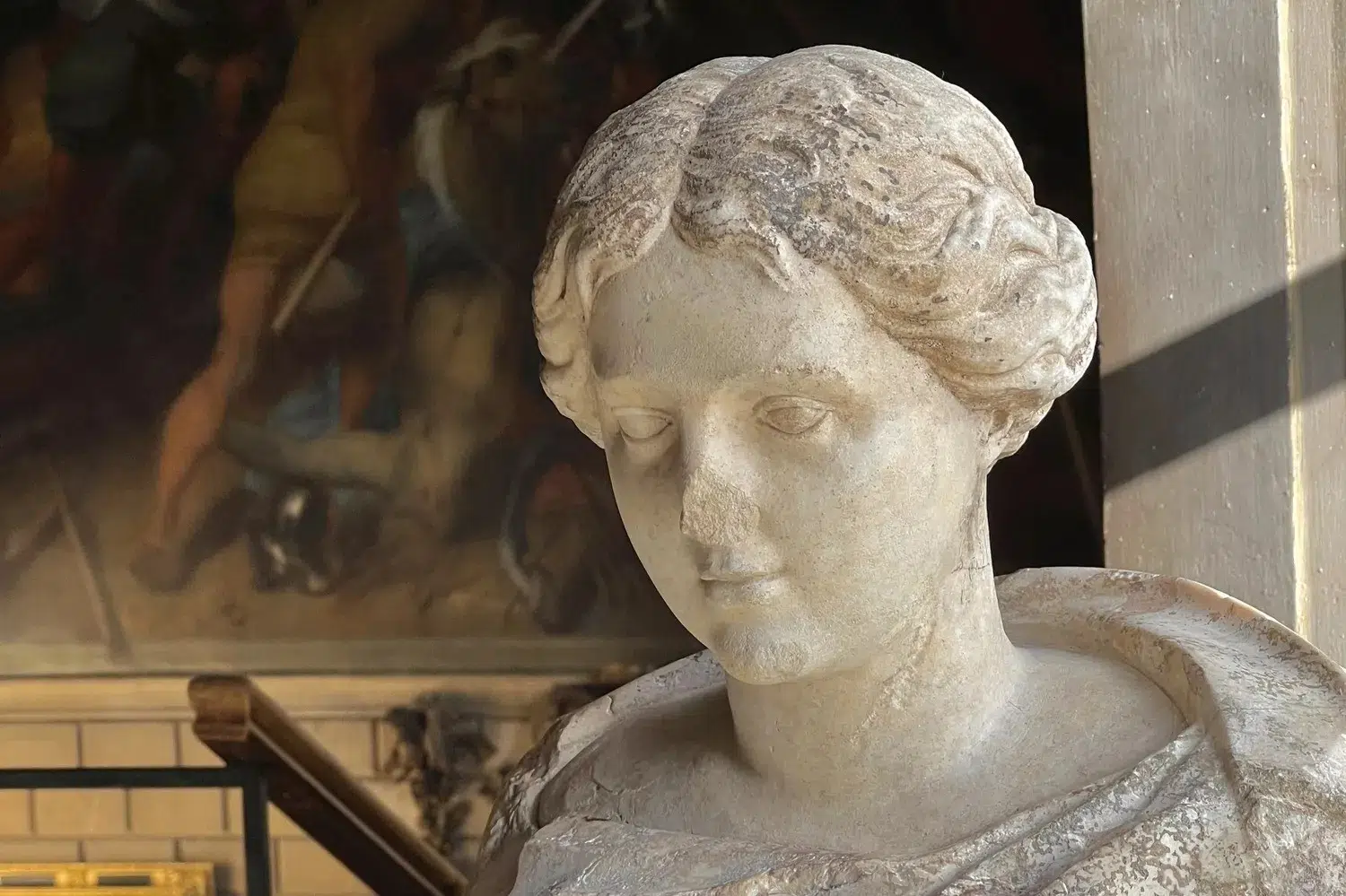
While working on construction at Burghley House, a famous English country estate near Stamford, Lincolnshire, workers unearthed a Roman marble bust.
Greg Crawley, while operating a digger, made the discovery when his machine accidentally rolled over what seemed like a regular stone.
To his surprise, it turned out to be the finely carved head of a Roman statue dating back to the first or second century CE, as reported by Archaeology magazine.
“I had a real shock as the digger bucket rolled over what I thought was a big stone to reveal a face,” stated Crawley. “When I picked it up, I realized it was a head of a statue. I couldn’t believe it when they told me it was a Roman marble statue. It was an amazing feeling to have found something so old and special—definitely my best-ever discovery.”
Additional digging revealed a marble bust, likely connected to the previously discovered head. Experts quickly dated the sculpture to the first or second century. They also found an iron dowel attached, which was probably added later to mount it on a pedestal or bust.
This kind of alteration was common among Italian antiquities dealers in the late eighteenth century. They did so to make excavated relics more appealing to aristocrats on the Grand Tour.
The bust might be acquired by Brownlow Cecil during the 1760s
The origins of the sculpture are still unclear, leaving room for speculation. Some suggest it might have been accidentally buried or deliberately hidden.
There is a belief that the sculpture could have been obtained by Brownlow Cecil, 9th Earl of Exeter, during one of his trips to Italy in the 1760s, according to the official news published on Burghley House’s website.
This era saw many acquisitions of ancient artifacts. However, the reasons behind its burial and manner in which it was eventually found remain a mystery.
Following careful cleaning and restoration work carried out by expert conservators, the head and bust have been pieced back together, bringing the sculpture back to its original form.
🔍👀 A mysterious 1,800-year-old Roman statue found at Burghley!
During the construction of our new visitor car park in spring 2023, digger driver Greg Crawley stumbled upon an the marble head of a Roman Lady…
Now on display inside Burghley House 🤩https://t.co/0gaeWXwRqb pic.twitter.com/19wQDjyWpy
— Burghley (@burghleyhouse) March 13, 2024
There are plans to showcase the artifact prominently at Burghley House, accompanied by an explanation of its journey from excavation to restoration. The discovery has also been shared with the British Museum, adding to the existing understanding of Roman art and culture in Britain.
Burghley House is a magnificent English country house from the sixteenth century, located near Stamford, Lincolnshire. It is a prime example of an Elizabethan prodigy house constructed by the Cecil family that remains inhabited by them today. This historical gem is listed as Grade I.
While the exterior largely maintains its Elizabethan charm, many of the interiors were remodeled prior to 1800, according to Wikipedia.
See all the latest news from Greece and the world at Greekreporter.com. Contact our newsroom to report an update or send your story, photos and videos. Follow GR on Google News and subscribe here to our daily email!



